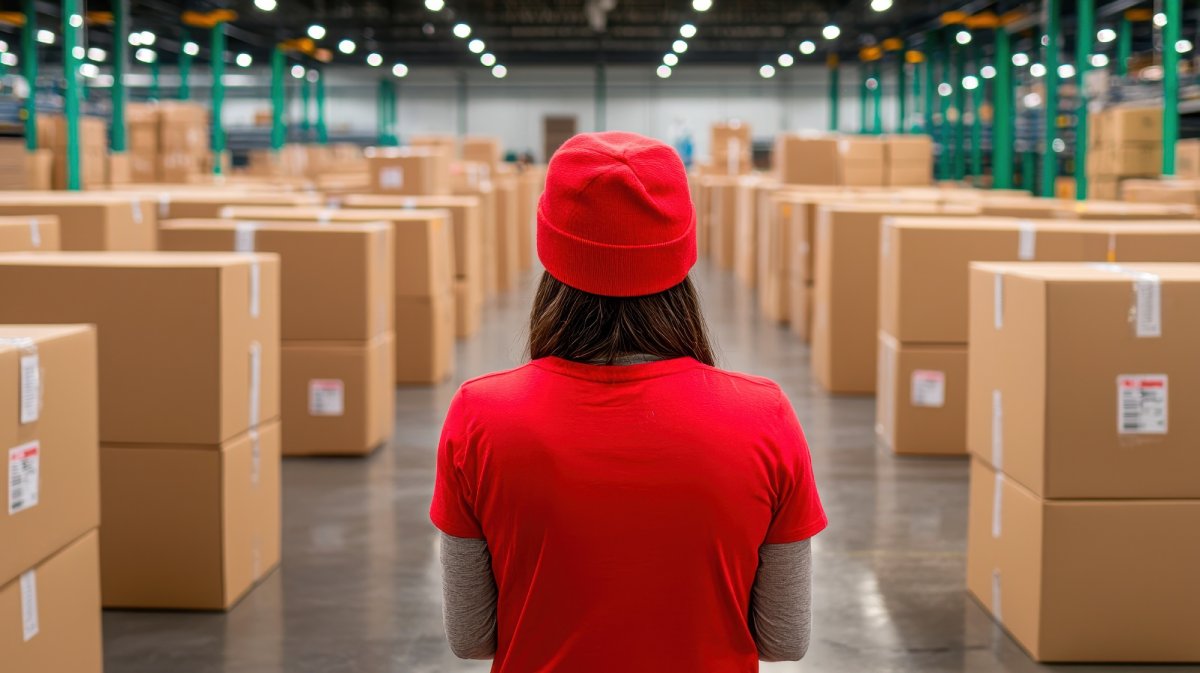The relationship between technology and business is symbiotic. Advancements in technology drive changes in business practices and approaches. However, business outcomes also drive technology to streamline processes, speed them up, and set the pace for every business competing in similar spaces.
In the retail space, warehouse solutions are integral to modern retail operations, palletizing goods efficiently in time to meet increasingly faster-paced demand from a range of channels.
On the technology side, the evolution of the internet and ecommerce platforms have been the key factors in changing the shape of whole industries. This has affected:
- how companies interact with their customers and vice versa
- how goods go from order placement to fulfillment and delivery
- by which channels consumers place orders and buy
This series of paradigm shifts has dramatically affected the landscape by changing the essential relationships between consumer behavior and the fulfillment of all kinds of goods.
What are the details of this relationship between technology, retail business, and how consumers are affected by both? How do ecommerce logistics and the advancement of modern warehouse equipment interrelate in support of a changing retail industry landscape to help retailers meet today’s challenges?
Table of Contents
ToggleeCommerce—Consumer Perception, Demand, and Faster Turnarounds
Before the retail industry harnessed the internet as a primary means of engagement, the management of goods was more easily standardized and even predictable. A single model to get goods to market helped with that. From manufacturers to wholesalers to distribution to retail locations, each point in the journey was well understood and in place. Longer delivery times and scarcity of specialty items were standard. Monitoring and aligning supply against shifting demand was a vital challenge, but with limited levers to address it. Throughout, the cost of holding items in warehouses meant the loss of potential profits with each passing day.
Responding to Shifts in Consumer Profiles
Those systems have changed over the past 25 years thanks to the internet and ecommerce. Besides the logistical changes to the way that retail businesses operate, another vital factor has changed dramatically: consumer perception and behavior. This is a product of how technology affects business, how business affects technology in turn, and what the average consumer expects from a modern buying experience between these poles.
Today’s consumer is a far cry from the consumer of decades past. The goalposts have moved in terms of turnaround times from order to delivery. Next-day and even same-day delivery of goods is the norm. So is consistent item availability, as found in brick-and-mortar locations. These expectations have been woven into modern consumer perception and change the relationship between commerce and technology at the cultural level.
Embracing More Precise Supply and Demand Mechanisms
The industry has adjusted to these shifts by using powerful forecasting tools and advanced technology platforms. Holding items in warehouses for long periods while incurring mounting costs has been replaced by partnerships with more data-driven distribution channels. Participation on ecommerce marketplace platforms like Amazon, setting up similar platforms on retailer websites, and building alliances with distributors to get the right items to market at the right time with minimal warehousing fees have become integral to modern operations.
The extensive use of data analytics to monitor supply and demand has grown alongside these shifts. Relationships and intelligent operations are the standard. They help form a system that enables retail businesses to be faster, more precise, and more scalable to meet demand as it shifts.
Automation and Intelligent Systems to Stay Ahead of the Curve
As fast as technology has affected the nature of consumer buying habits, the need to move goods as efficiently as possible has also increased to serve those habits and needs. Warehouses of eras past, and even ones of recent years, have also changed.
Time remains a factor, not just in delivery but also in manufacturing, storage, and shipping. The cycle has become tighter. To serve it, the palletizing, picking, and shipping of items also have to move faster to meet evolving consumer expectations.
Alleviating Legwork and Physical Demand
Automation has also become an integral part of modern warehousing and distribution for the retail industry today. These solutions are a confluence of hardware, software, and mechanical components designed to alleviate the physical demand on workers. This shift in roles and emphasis represents another change in the supply chain as it relates to technology solutions.
Warehouse workers rely on their equipment in different ways than before. There is more emphasis on planning, prioritization, and operations best practices rather than strictly on the physical labor involved in manually picking items to fulfill orders. With a combination of human input and the precision and efficiency of modern warehousing and distribution solutions, matching the changing requirements of a buying experience becomes more straightforward.
Essential Components of Modern Warehouse Solutions
To support a redefined model for getting retail goods to market, modern operations incorporate fundamental elements that contribute to efficient processes. Among the characteristics of modern warehouse equipment, versatility is one of the most important. Providers of modern and intelligent warehouse solutions develop solutions that suit a range of retail businesses managing all kinds of goods.
Greater Flexibility
Warehouse technology providers also design solutions that can be easily customizable and ready for implementation in various locations. Not every warehouse and distribution location is the same as another.
Solutions are most effective when they are modular and tailored to the specific types of items a warehouse stores and moves. They’re designed to be added to a whole apparatus, supporting operational efficiency as needed. As businesses expand to include a greater range of items, the technology solutions are designed to be similarly upgraded and expanded.
Fast Implementation
Another characteristic of a modern warehouse logistics solution is how quickly each component and station can be set up and implemented. User-friendly functionality and intuitive interfaces are primary concerns when shortlisting solutions to serve the warehousing and distribution needs of retail businesses.
A big part of this decision is evaluating how well a vendor understands the rigors of the industry, timelines, ranges of products, and the logistical elements that contribute to smooth and cost-efficient operations.
Combined Expertise in Partnership is More Important Than Ever
Mutual expertise and industry knowledge are well understood when creating powerful partnerships. Between technology and business aspects of operations, the continual development of solutions against the changing landscape of the retail industry has never been more critical.
Strong partnerships between parties with complementing competencies have always been best practices. But these aspects are often taken for granted. No matter how sophisticated the technology in place happens to be, it’s cooperative relationships that make the difference.
Improved Uptimes
When partnerships between technology vendors and warehouse operations are emphasized, so are improvements in uptime. Top-tier vendors of warehouse equipment and systems design their products with durability and longevity in mind. They factor in maintenance and ongoing support, with maximum uptime as their primary objective. They view partnership as a long-term relationship and investment.
Achieving Success Through Partnership
As retail processes accelerate to meet consumer expectations for next-day and same-day delivery, as well as consistently stocked shelves, businesses can achieve success only by collaborating with the right partners. As much as paradigms have shifted, cooperation has always been the most effective means to create efficiency to meet supply chain challenges. Technology is just a means to that end. This is a principle is a constant beacon as the channels and systems that the retail industry relies on continue to evolve.
Shashi Teja
Related posts
Hot Topics
What Is Krea AI & Why’s Everyone Suddenly Talking About It?
You’ve probably seen the buzz—Krea AI popping up all over your feed. Or maybe a friend casually dropped, “You have…
3 Ways in Which Business Intelligence Software Could Improve Your Hospitality Business
Running any type of policy business can require you to analyse all types of information in order to identify inefficiencies…



